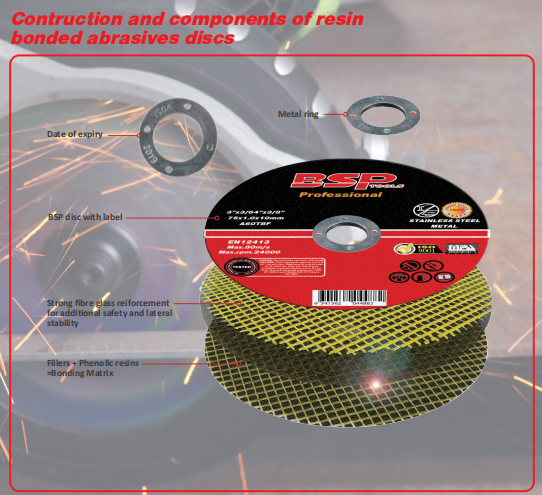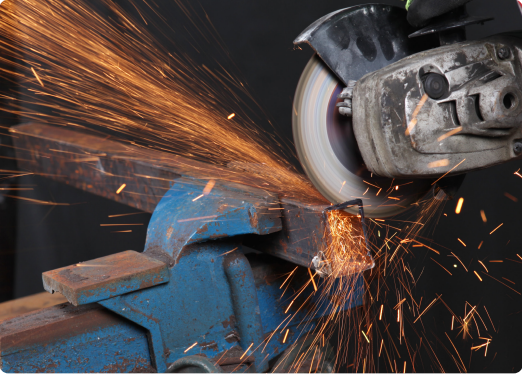
1. Composition of grinding wheel
Take the BSP grinding wheel as an example.
Trademark: coated paper, black paper, generally speaking, most of them use coated paper now. The trademark surface can be divided into hard film and soft film
Mesh: According to different markets in different countries, the mesh can be divided into 1 layer, 2 layers, 2.5 layers and 3 layers.
The back of the grinding wheel is made of non-woven fabric or black paper. Generally speaking, the sheet can be made of black paper or non-woven fabric according to customer requirements. Generally, the grinding wheel is mostly made of black paper.
2. Grinding wheel production process
- Mixing, mixing abrasivesand binders together, that is, mixing (resin liquid/resin powder) with some other fillers, such as cryolite, pyrite, etc.
- Forming, forming it by cold pressing
- Hardening and calcination at a temperature of about 185 degrees for 24 hours
- Inspection package
3. After understanding the composition of the grinding wheel, how to choose and judge the quality of a grinding wheel?
- It is very important to use the grinding wheel safely. Generally, the grinding wheel will be used on a machine with a relatively fast operation speed. Therefore, when using it, we must ensure that the performance of the grinding wheel is complete, so as to reduce some safety problems during use as much as possible.
- The second is the quality and performance of the grinding wheel, which is also the key to judging whether the product is good or not, to judge its cutting life
- The third is the appearance and feel of the product. It must be comfortable to use, that is, it is relatively stable to use.
4. Conclusion
Choosing the right grinding wheel for a particular application depends primarily on the hardness of the material being cut. Abrasive materials, adhesives, density, grade and particle size are also key considerations. The physical size of abrasive particles, called particle size, affects the cutting performance of grinding wheels. Fine particles remove less material and are commonly used for polishing and obtaining a fine surface finish. Large grain sizes will cut the material quickly, but will produce a rough surface finish.

